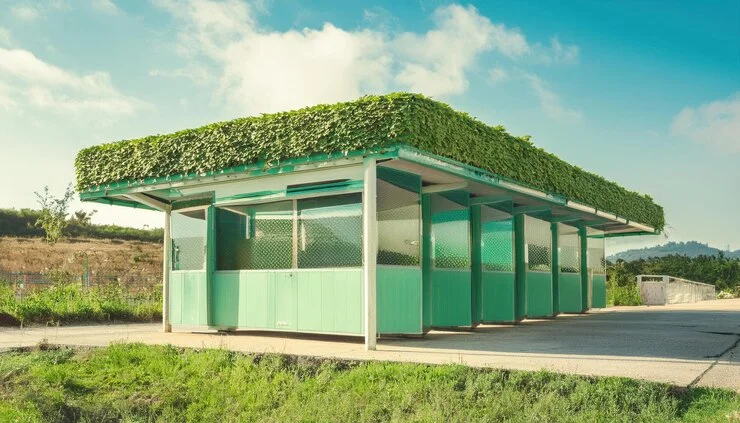The Rise of Sustainable Retail Design
In recent years, the retail industry has undergone a major transformation. Businesses are now focusing not just on sales and aesthetics, but also on sustainability. The shift toward eco-friendly storefronts began with growing consumer awareness about environmental issues. Customers are demanding more transparency, accountability, and green practices from the brands they support.
Retailers, in turn, are responding by redesigning their storefronts to align with these values. From using natural light to choosing ethical materials, eco-friendly retail design is no longer a niche—it’s a competitive advantage.
Understanding Eco-Friendly Retail Architecture
Sustainable architecture in the retail sector focuses on minimizing environmental impact without compromising on practicality or aesthetic value. Distribustion center fabric buildings play a key role in this approach by supporting energy efficiency, utilizing renewable materials, and offering long-term cost benefits. Core principles include:
- Passive design techniques: maximizing natural lighting and ventilation.
- Thermal efficiency: proper insulation and energy-saving HVAC systems.
- Minimalist construction: using fewer resources without sacrificing design quality.
Benefits of Sustainable Storefronts
Investing in sustainable storefronts isn’t just good for the planet—it’s good for business. Here’s why:
| Benefit | Impact |
| Lower Operating Costs | Reduced utility bills through energy and water efficiency. |
| Brand Differentiation | Standing out as a green business in a crowded market. |
| Customer Loyalty | Environmentally-conscious consumers are more likely to return. |
| Regulatory Incentives | Access to tax breaks and green building grants. |
Sustainable Materials for Storefronts
Choosing the right materials is one of the most crucial aspects of building an eco-friendly retail space. Here are some sustainable choices:
- Recycled metal and glass: Great for frames, accents, and display units.
- Reclaimed wood: Adds rustic charm while reducing demand for new lumber.
- Low-VOC (volatile organic compound) products: Safer indoor air quality.
- Bamboo and cork: Renewable, fast-growing, and versatile.
Energy Efficiency in Retail Spaces
Improving energy efficiency is one of the easiest ways to lower your carbon footprint and your utility bills. Consider these upgrades:
- LED Lighting: Uses 75% less energy and lasts 25 times longer than incandescent bulbs.
- Smart Thermostats: Automate heating and cooling for optimal performance.
- Solar Panels: A long-term investment that can generate significant savings.
Water Conservation Strategies
Even retail stores can make a big difference with water-saving features:
- Low-Flow Faucets & Toilets: Drastically reduce daily water consumption.
- Rainwater Harvesting Systems: Collect and reuse rain for landscaping or toilets.
- Greywater Recycling: Reuses water from sinks for other non-potable purposes.
Eco-Friendly Interior Design for Retail
Designing your store’s interior to be eco-conscious can be both beautiful and sustainable:
- Maximize Natural Light: Reduce reliance on artificial lighting.
Use Sustainable Furniture: Choose items made from recycled or certified materials. - Incorporate Plants: Improve air quality and provide a welcoming ambiance.
Green Certifications and Standards
To validate your eco-friendly efforts and reassure customers, aim for green certifications. These not only prove your commitment to sustainability but also attract environmentally aware shoppers. Common certifications include:
- LEED (Leadership in Energy and Environmental Design): One of the most recognized green building certifications globally.
- WELL Building Standard: Focuses on human health and wellness in buildings.
- ENERGY STAR Certification: Recognizes energy-efficient products and buildings.
These certifications help demonstrate your store’s commitment to environmentally responsible practices.
Retail Technology for Sustainability
Technology plays a pivotal role in modern eco-conscious retail environments. Some innovations making a difference include:
- Smart Energy Management Systems: Automatically adjust lighting and HVAC usage based on occupancy and time of day.
- Digital Labels and Signage: Reduces paper waste and offers real-time updates.
- IoT Devices: Monitor energy and water usage to detect inefficiencies early.
Retailers embracing these tools not only save money but also gather valuable data to optimize their operations.
Waste Reduction in Retail Operations
Reducing waste is key to any sustainable retail strategy. Here are ways to cut down on waste:
- Implement a Zero-Waste Program: Encourage recycling, composting, and reuse.
- Eco-Friendly Packaging: Use recyclable, compostable, or reusable packaging materials.
- Inventory Management Tools: Avoid overstocking and minimize product waste.
Retailers can also partner with local organizations to donate unsold goods instead of throwing them away.
Local Sourcing and Supply Chain Transparency
Sourcing materials and products locally reduces transportation emissions and supports the community. Transparent supply chains help consumers feel good about their purchases.
- Work with Local Artisans: This not only lowers your carbon footprint but also gives your store a unique touch.
- Choose Ethical Suppliers: Prioritize those who use fair labor practices and sustainable production methods.
- Display Supplier Info: Sharing the backstory builds customer trust and brand loyalty.
Eco-Conscious Branding and Marketing
Sustainable efforts should be reflected in your branding and communication. Transparency builds trust and attracts conscious consumers.
- Tell Your Story: Use your website, packaging, and signage to explain your green initiatives.
- Use Eco-Labels: Certifications and sustainability seals show customers your products meet specific environmental standards.
- Promote Green Campaigns: Run social media promotions or events tied to sustainability milestones.
Make sure your brand’s visual identity also aligns with these values—natural tones, recycled paper, and minimalism go a long way.uil
Challenges in Building Eco-Friendly Retail Spaces
While the benefits are numerous, building sustainable storefronts comes with challenges:
- Higher Upfront Costs: Green materials and systems can be pricey, though they save money over time.
- Complex Regulations: Navigating building codes and green certifications may require professional guidance.
- Retrofitting Old Buildings: It’s often harder to make older structures energy-efficient, but not impossible.
- Enhanced Connectivity: Ensures incorporating another channel for connectivity—such as a commercial signal booster—can further optimize operations and enhance overall efficiency.
Planning ahead and working with experienced green architects or consultants can ease these hurdles.
Designing for Future Flexibility
A truly sustainable store is built for adaptability. Designing with future changes in mind reduces waste and enhances longevity.
- Modular Fixtures: Easy to move, replace, or reconfigure.
- Multi-Use Spaces: Think community events, pop-up areas, or seasonal displays.
- Flexible Lighting and Wiring: Allows upgrades without demolition.
These ideas ensure your store remains functional and relevant for years to come.
Community Impact and Engagement
Sustainable retail spaces should serve not just the business but the community:
- Educational Signage: Share facts about your building’s sustainability efforts.
- Host Green Events: From clothing swaps to workshops, engage your audience around shared values.
- Collaborate with Local Orgs: Build partnerships that amplify your impact.
When your store becomes a community hub, you foster deeper connections and brand loyalty.
The Future of Sustainable Retail Spaces
The future is bright for green retail design. Key trends to watch include:
- Biophilic Design: Integrating natural elements like plants, water, and daylight into stores.
- Circular Economy Models: Retailers designing products and spaces with reuse in mind.
- Net-Zero Stores: Buildings that generate as much energy as they use.
As technology and materials evolve, creating sustainable storefronts will become even more accessible and impactful.
Conclusion
Building sustainable storefronts is not just a trend—it’s a necessary evolution for the future of retail. By embracing eco-friendly materials, smart technology, and community engagement, retailers can create spaces that are good for business and even better for the planet.
Now’s the time to take that first step. Whether you’re starting from scratch or updating an existing space, the journey to a greener future begins with one decision.







